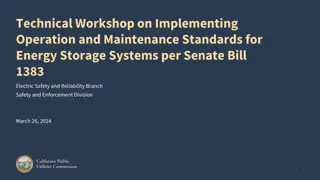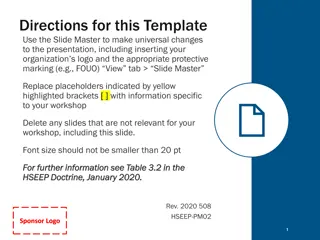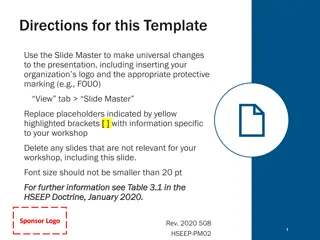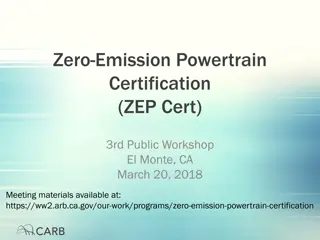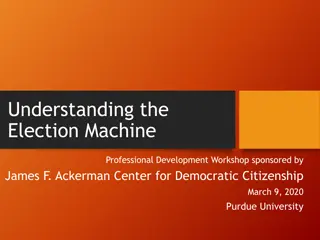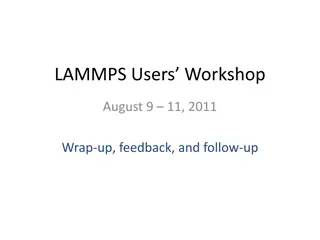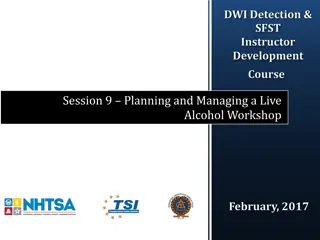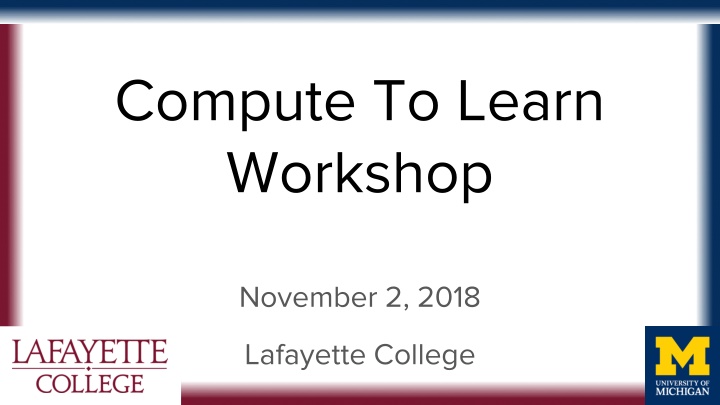
Innovative Compute-to-Learn Workshop at Lafayette College
Discover the Compute-to-Learn workshop at Lafayette College, where students develop practical programming skills and engage deeply with material to construct new knowledge. The workshop fosters a social learning process and encourages the creation of functional demonstrations using a design process approach. Explore the studio philosophy, history, and the Wolfram Demonstrations Project's role in dissemination and transferability.
Download Presentation

Please find below an Image/Link to download the presentation.
The content on the website is provided AS IS for your information and personal use only. It may not be sold, licensed, or shared on other websites without obtaining consent from the author. If you encounter any issues during the download, it is possible that the publisher has removed the file from their server.
You are allowed to download the files provided on this website for personal or commercial use, subject to the condition that they are used lawfully. All files are the property of their respective owners.
The content on the website is provided AS IS for your information and personal use only. It may not be sold, licensed, or shared on other websites without obtaining consent from the author.
E N D
Presentation Transcript
Compute To Learn Workshop November 2, 2018 Lafayette College
Compute-to-Learn Students develop practical programming skills for use within and beyond the course Students engage deeply with material to construct and integrate new knowledge Learning occurs as a social process within authentic disciplinary practices Students learn from interacting with peers through shared experience and understanding Students use a design process approach to create functional demonstrations for broad use J. Chem. Educ. 2017, 94, 1896-1903.
Compute-to-Learn Studio Philosophy The main goal in C2L is to master a topic or concept in physical chemistry more deeply by engaging in a creative activity relevant to the material. Adopt an educational strategy more commonly found in the realms of theatre, music, and art: the concept of a studio, in which performance is more explicitly recognized as an outcome. Superimposing this strategy onto a chemistry course allows us to have our own studio, where new skills and understanding can be rehearsed amongst peers and under the supervision of more experienced individuals.
Compute-to-Learn History CHEM 260H first implemented in F08 and offered continuously ever since Prior to F15: Writing-to-Teach Students worked in small groups to develop supplemental explanatory texts for concepts covered in CHEM 260 (wiki-pages, a student-written textbook, etc.). F15 present: Compute-to-Learn Students work in small groups to develop interactive computer demos of concepts covered in CHEM 260. Products are reviewed & published on Wolfram Demonstrations Project website. F16 present: Expanded to joint CHEM 230/260H studio. S18 present: C2L offered at Lafayette in CHEM 324 Fourth Hour
The Wolfram Demonstrations Project Addresses dissemination and transferability Mimics an authentic research experience of expert-reviewed, publishable, and citable products Open source: All codes and demonstrations are accessible to the general public, and can be used even without a Mathematica License! Pedagogy is expandable to ANY discipline that can use visualization, from K12 to graduate school: Physical Sciences Mathematics Engineering Business Social Sciences Art and Architecture
Learning Mathematica Demonstrations Compute-to-Learn takes place in weekly studio sessions Peers collaborate to create explanatory demonstrations Peers critique each others explanations/demos Tutorial on creating demonstrations in Mathematica Provided at the beginning of the semester Carried out over the first three sessions Let s check out a condensed version of the tutorial now!


